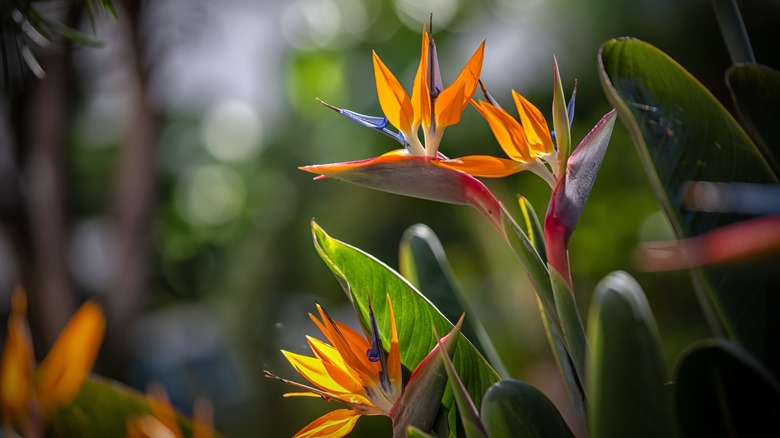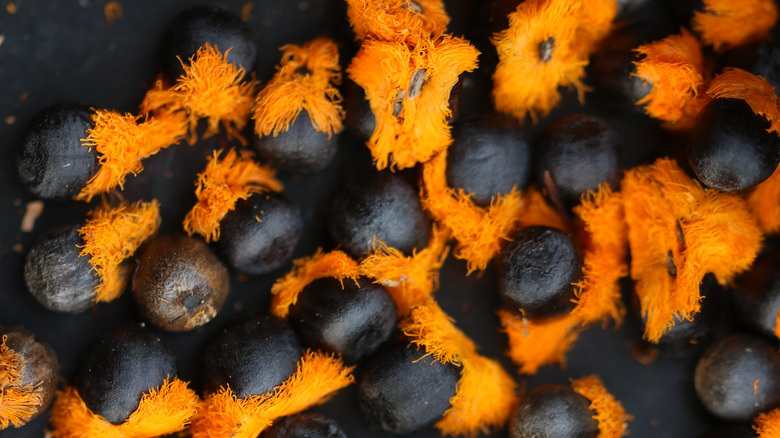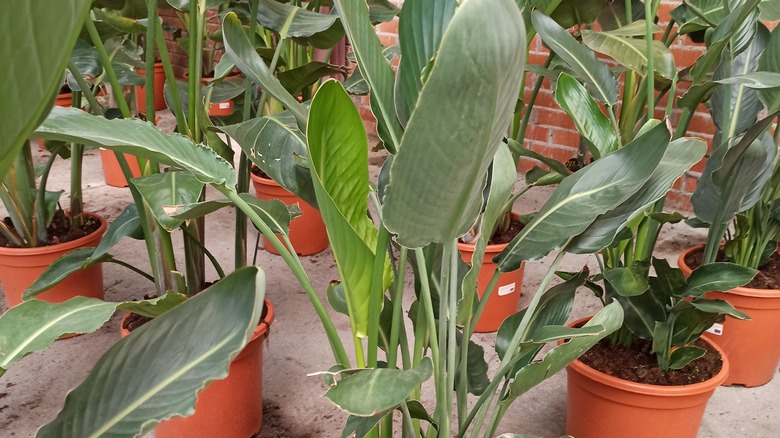Two Easy Ways To Propagate Bird Of Paradise For A Stunning Floral Display
If you're a fan of unique cut flower arrangements or are looking to add some tropical interest to your garden, consider planting a bird of paradise (Strelitzia reginae). You'll likely recognize the bright, playful blooms of the plant, which bears orange sepals and deep purple petals that resemble a tropical bird in flight. If you've learned everything you should know before planting bird of paradise, including the best time to fertilize it and whether to locate your plant outdoors (they thrive in USDA zones 10 and 11) or indoors as a houseplant, you'll find this beautiful plant to be well worth your time.
After all, once your bird of paradise is mature enough to start blooming, it can yield close to three dozen flower spikes intermittently throughout a single year. If your bird of paradise is thriving and flowering, you may find yourself ready to start nurturing another one (or two!) of these slow-growing but gorgeous plants. There are two main ways to propagate bird of paradise — by seed or by division — and each has its advantages and disadvantages.
Propagate by seed
The advantage of propagating bird of paradise by seed is that you can easily harvest seeds from the blooms of your plant without uprooting or repotting the plant cluster. This can come in handy, as a mature bird of paradise blooms more when slightly pot-bound. But propagating by seed is not for the impatient: bird of paradise seeds can not only be difficult to germinate, but slow to germinate, taking 8 weeks or more. Once established, bird of paradise takes anywhere from 4 to 7 years to begin flowering when grown from seed, so long-term care should be considered ahead of time.
If you want to propagate bird of paradise by seed, harvest the seeds from your existing plant's flowers and soak them for 24 hours prior to sowing. Remove the orange flesh from the seeds and plant them one inch deep in moist, warm potting soil. Keep the temperature warm — between 77 to 85 degrees Fahrenheit — to increase the likelihood of germination. Once seedlings have emerged and grown several leaves, they can be transplanted, and they should continue to be repotted as they grow to full size to establish healthy roots. Though mature bird of paradise plants enjoy full sun, younger plants should be grown in slightly lower light to develop properly.
Propagate by division
Though it may involve disturbing an otherwise happily cramped plant, division is the easier method of propagating bird of paradise. Bird of paradise is rhizomatic, making propagation by division relatively straightforward. To propagate by division, gardeners can either separate root clumps into smaller, single-stemmed plants in spring or summer, or use a disinfected knife to cleanly remove suckers or pups from a larger plant. Once divided, plant the separated stems or suckers at the same depth of soil they were previously in, and keep the soil moist for three months as the new roots emerge.
The advantage of dividing bird of paradise for propagation is the speed at which you'll see flowery results: whereas seed propagation requires 4 to 7 years to yield flowers, propagation by division can produce flowers in as little as 1 to 2 years. If you find that your bird of paradise won't bloom within that time frame, consider adjusting the frequency of fertilizing your plant.


